
The Best Motorcycle Trackers: Never Lose Your Ride
left for contents
Motorcycle theft is a nasty reality, but ignoring it is like riding without a helmet – you’re just asking for trouble.
You see those romantic images of bikes parked up, basking in the sunset after a thrilling ride? Yeah, thieves see those too, but they’re picturing your pride and joy in the back of their van, not the open road.
Motorcycle trackers are a big step up, allowing you to recover your bike from thieves – or even stop a theft in progress.
If you’re in the USA, there’s basically one game in town that blows away all the others: Monimoto.
Monimoto M9 GPS Anti-Theft Tracker provides reliable security with instant alerts and precise location tracking.
- Easy to install and transfer between vehicles
- Sends phone call alerts within 1 minute of movement detection
- Long-lasting rechargeable battery up to 1 year
- Requires a yearly GSM service subscription after the first two months
If you’re in the UK, you have other choices like Biketrac and Datatool Stealth, but those aren’t available in the USA.
Trackers are worth a look, because I have a few hard truths about motorcycle security:
- Most motorcycle alarms are just loud noises that people ignore. Relying on bystanders to care about your bike and do something about an ongoing theft is not a security solution.
- While disc locks are a great first line of defense, they are not going to stop a motivated criminal with a power saw or a push cart / dolly.
- Think your insurance has you covered? Sure, maybe financially (if you beat them in the claims process), but try replacing the emotional connection you have with your bike with a check. Can’t be done.
What you’re looking for is a discreet device that’s weatherproof, reliable, and packs a very long lasting battery. Instant alerts and a sensitive, yet user-friendly alert and silent alarm are a must, whether you keep your bike locked in a garage or out on a public street.
Monimoto 9: The Gold Standard in Stealth Security
Let’s face it: parking your motorcycle anywhere but your own locked garage can feel like leaving a stack of cash on the sidewalk. The anxiety is real, and for good reason. But what if you could virtually chain your bike to your phone, getting instant alerts the moment someone messes with it?
This is what the Monimoto 9 delivers, along with wire-free installation, a battery that lasts over a year, and the option for international service on GSM networks if you’re taking your bike out of the USA. All in a package that’s easy to hide and weighs just 2.12 ounces.

Key Benefits:
- Truly Wire-Free Freedom: Forget splicing wires or messing with your bike’s electrics. The Monimoto 9 runs entirely on batteries which last an entire year on a single charge. Pop in the SIM card, pair it with your phone, hide it on your bike, and you’re done. Installation is literally minutes. This standalone design is a game-changer for riders who value simplicity and want to avoid warranty issues.
- The Smartest Alarm You’ll Ever Meet: Monimoto’s intelligent system uses GPS, GSM, and motion sensors to understand what’s happening to your bike. I even read a story of a Monimoto making an alert phone call to the owner when criminals were attempting to drill through the keyhole of his Ninja – they hadn’t even tilted the bike off the kickstand. And yet he never got a false alert either! But if you move the bike to go out for a ride, with the paired key fob on you? Silence.
- Pinpoint Location, Real-Time Recovery: If your bike is stolen, the Monimoto app transforms into a tracking command center. You get live location updates, making it far easier to work with the authorities and recover your motorcycle. It’s like having a personal recovery team at your fingertips, just without the subscription cost of a call center.
- Travel-Ready, Global Coverage: Touring across borders? Monimoto has you covered across Europe and the USA (and beyond!). The subscription is essential for this global reach and the 24/7 monitoring service. Think of it as your bike’s international bodyguard. Subscription plans are flexible to suit different needs.
- Stealth Design, Maximum Impact: Small, discreet, and designed to be easily hidden, the Monimoto 9 is practically invisible to thieves. They can’t disable what they can’t find. It’s the ninja of motorcycle trackers.
Are There Any Drawbacks?
- Subscription Cost: Yes, there’s an annual subscription of $49. But let’s be real: Compare the subscription to your insurance deductible or the cost of replacing your stolen baby – it’s a smart investment in peace of mind. This is the price of constant vigilance and global connectivity. It’s what makes the system work.
- Charging Once a Year: The battery will need to be charged up every year or so, depending on usage. The app proactively warns you when they’re getting low. Charging takes about 1.5 hours, and can be done through the USB-C port on the device. Charge it while you’re out on a ride and you’re good to go. It’s a minor maintenance task for years of security.
It doesn’t get better than the Monimoto – just tuck it away inside your bike (use the included zipties to secure it down), set up the app, and you’re ready to roll.
The proximity of the included key fob is how the Monimoto knows it’s you moving your bike, not a thief. When the fob is near, the tracker disarms. Walk away with your keys, and it automatically arms itself. It’s seamless, it’s smart, and it means no fumbling with apps or remembering to arm your tracker every time you park.
Seamless security.
Monimoto M9 GPS Anti-Theft Tracker provides reliable security with instant alerts and precise location tracking.
- Easy to install and transfer between vehicles
- Sends phone call alerts within 1 minute of movement detection
- Long-lasting rechargeable battery up to 1 year
- Requires a yearly GSM service subscription after the first two months
Alternatives
While Monimoto 9 is our top pick, there are other trackers worth considering, depending on your specific needs and priorities. Many of these have a much lower sticker price than the Monimoto, but they catch you on fees later on…
Scorpio Rlink
The Scorpio Rlink GPS Tracking System is the Swiss Army knife of motorcycle trackers, doing a lot more than just tracking. It’s packed with features, offering a comprehensive security system with ride recording and.
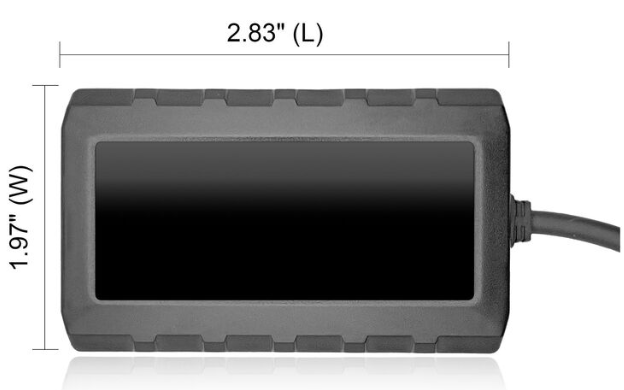
Scorpio Rlink Highlights:
- Integrated Security System: Rlink isn’t just a tracker; it’s a full-fledged security system that can integrate with Scorpio alarms. This means you can have both proactive theft deterrence (alarm) and reactive tracking in one system.
- Advanced Notification Options: Beyond phone calls, Rlink offers SMS and email alerts, giving you multiple ways to be notified of potential issues.
- Geofencing and Movement Alerts: Set up geofences and get alerts if your bike moves unexpectedly outside of a certain area.
- Remote Immobilization (on select models/with alarm integration): You can add a remote ignition disabler to your Scorpio Rlink system which will remotely disable your bike’s ignition – a powerful feature to stop a thief in their tracks.
- Wired Installation: Rlink is wired directly to your bike’s battery, ensuring constant power and enabling some of its more advanced features.
Scorpio Rlink Trade-offs:
- Complex Installation: Wired systems are more involved to install than battery-powered trackers like Monimoto. Professional installation is often recommended, adding to the overall cost.
- Can Be Overkill for Some: The sheer number of features can be overwhelming for riders who just want simple, reliable tracking.
- Subscription Cost: The Rlink system requires a subscription that’s about $95/year, or $167 every two years. However you can also pay month to month for $10/month, which is great for seasonal riders who have their bike properly locked down over the winter.
Scorpio Rlink GPS Tracking and Notification System keeps your ride secure with instant alerts and real-time tracking.
- Instant text and push notifications for any movement
- High-resolution GPS tracking every 30 seconds
- Easy installation with a simple 2-wire connection
- Requires an annual subscription for cellular connectivity
Tracki Pro
The Tracki Pro is more of a general tracker than a security alert system – it’s going to allow you to track your bike after it’s taken, but it’s not going to alert you as soon as someone is messing with your bike.
Tracki Pro Highlights:
- Cheap (up front): The up front price really can’t be beat, but make sure you’re looking at the subscription cost too…
- Global Reach: Tracki has worldwide coverage in 180+ countries, great for international riders.
- Versatile Tracking Features: Geofencing, speed alerts, and detailed tracking history are all included.
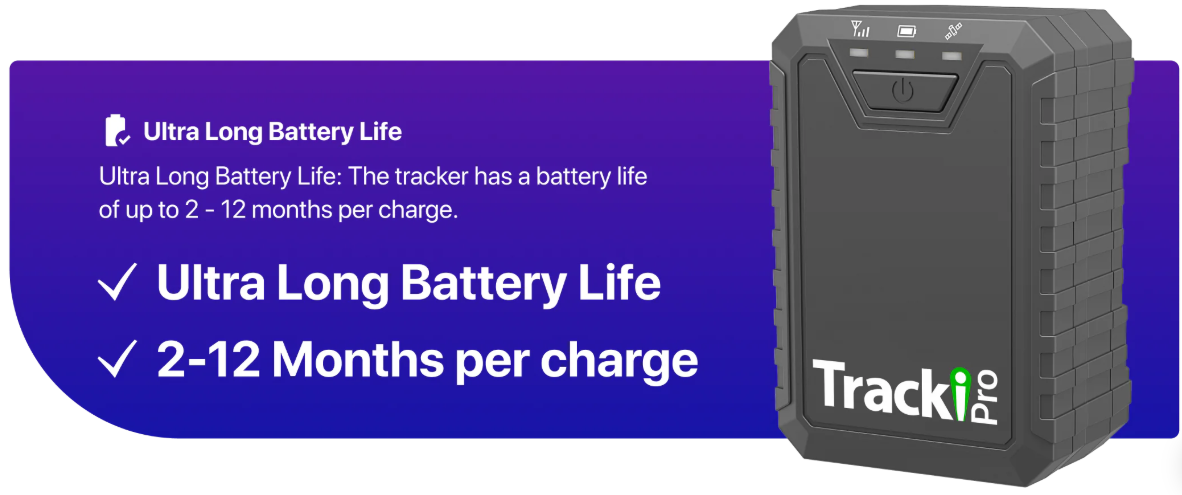
Tracki Pro Trade-offs:
- Chunky: The Tracki is more geared towards car tracking, so it’s about the size (and shape) of an avocado and won’t fit easily in the thin spaces of a motorcycle.
- Subscription Cost: While you save up front by going with the Tracki Pro, you’re going to pay $20 a month for monthly service or $10/month for a long term plan. Much more than Monimoto or Scorpio.
- Shorter Battery Life: The small size means a smaller battery, resulting in shorter battery life compared to larger trackers – only 2-7 months. They do offer extended battery options though.
- General-Purpose Tracker: Tracki Pro isn’t motorcycle-specific. It lacks some of the tailored motorcycle features like Monimoto’s smart motion detection.
- Notification Type: Primarily app notifications, not phone calls for immediate alerts.
Tracki Pro GPS Tracker offers long-lasting battery life and reliable worldwide tracking.
- Up to 7 months of battery life on a single charge
- Strong waterproof magnetic design for discreet placement
- Works worldwide with GPS, Wi-Fi, and multiple satellite systems
- Requires a monthly subscription for tracking services
Comparison Table
| Feature | Monimoto 9 | Scorpio Rlink GPS Tracking System | Tracki Pro |
| Best For | Top-tier, no-fuss security | Feature-rich, integrated system | Lower up-front cost |
| Subscription | Required $49/year | Required $95/year | Required $137/year |
| Power Source | Battery (Rechargeable) | Hardwired (bike battery) | Battery (Rechargeable) |
| Battery Life | Up to 12 months | Bike battery | 2 – 7 months |
| Alert Type | Phone call, App notification | Phone call, SMS, Email, App notification | App notification, SMS, Email (plan dep.) |
| Installation | Wire-free, zipties included | Wired into your battery | Wire-free, magnet |
| Key Fob/Arming | Yes (automatic arm/disarm) | Optional (with Scorpio alarm) | No (motion/geofence arming) |
| Geofencing | No | Yes | Yes |
| Ride Logging | No | Yes | Basic tracking history |
| Crash Detection | No | Yes | Yes |
| Weatherproofing | Waterproof | Weatherproof | Water-resistant (Pro version) |
| Size | Compact | Compact | Avocado Sized |
| Buy on Revzilla | Yes (Monimoto M9 at Revzilla) | Yes (Scorpio Rlink at Revzilla) | Not available |
| Buy on Amazon | Yes (Monimoto 9 at Amazon) | Yes (Scorpio Rlink at Revzilla) | Yes (Tracki Pro at Amazon) |
Buying Guide: Motorcycle Trackers
Let’s break down the key features and tech specs you need to wrap your head around to make the right choice. Think of this as your cheat sheet to tracker smarts.
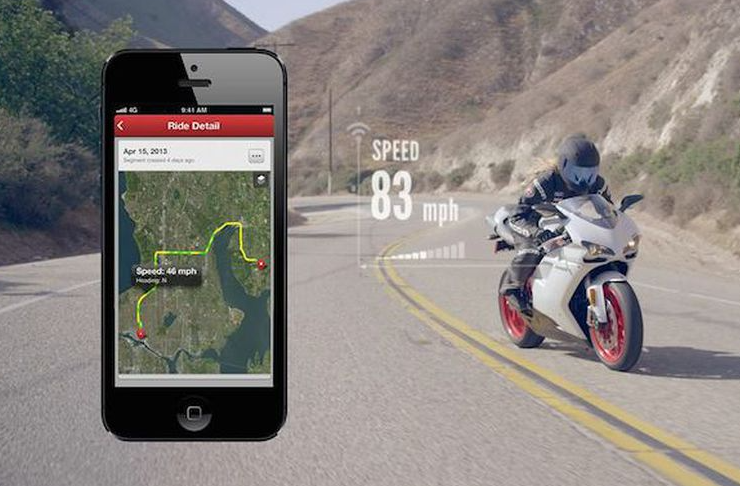
- GPS vs. Cellular vs. Bluetooth vs. Wi-Fi: It’s alphabet soup, I know. GPS (Global Positioning System) is your core location tech, using satellites to pinpoint your bike outdoors. Cellular (GSM/LTE) is how the tracker sends location data to your phone over mobile networks – crucial for real-time tracking and alerts when your bike is far away. Bluetooth is short-range wireless, often used for key fobs or proximity-based features. Wi-Fi can help with indoor location accuracy in some trackers. The best trackers use a combo of GPS and cellular for reliable, wide-range tracking.
- Subscription Fees: This is a big one. Cheap devices on Amazon may have higher subscription fees or nasty contracts that end up making the device much more expensive in the long run than say a Monimoto 9. Do the math over a year or two to see which model is more cost-effective for you.
- Power Source & Battery Life: Trackers are either battery-powered or hardwired to your bike’s electrical system. Battery trackers (Monimoto, Tracki) are easier to install but need battery replacements or recharging. Hardwired trackers (Scorpio, some others) draw power from your bike, so no battery worries, but installation is more complex. Battery life is key for battery trackers – look for models with months or years of life, not just days.
- Alert Types: How does the tracker tell you if something’s amiss? Phone calls (Monimoto) are the most immediate and attention-grabbing. App notifications and SMS texts are common too. Consider what type of alert you’re most likely to notice and react to quickly.
- Geofencing: This feature lets you set up virtual boundaries (like your home, workplace, or a tour route). If your bike moves outside these zones without authorization, you get an alert. Super handy for theft detection and also for tracking your rides within a set area.
- Installation: Wire-free trackers (Monimoto, Tracki) are DIY-friendly and can be installed in minutes. Hardwired trackers (Scorpio) require some basic electrical knowledge or professional installation. Factor in your comfort level with bike wiring.
- Size and Stealth: Smaller is generally better for trackers. You want to be able to hide it discreetly on your bike, so thieves don’t spot it and disable it. Compact trackers are easier to stash in fairings, under seats, or in other hidden spots.
- Weatherproofing: Motorcycles live outdoors, rain or shine. Your tracker needs to be weatherproof (water-resistant or waterproof) to handle the elements. Look for trackers with IP ratings (like IP65 or higher) for water and dust protection.
Motorcycle Security Strategies Beyond Trackers
A motorcycle tracker is a powerful weapon in the fight against theft, but it’s most effective when it’s part of a comprehensive security strategy. Think of it like this: a tracker is your last line of defense, the alarm bell that rings when all else fails. But you want to make it as difficult as possible for thieves to even get to the point where they trigger your tracker. Let’s break down how to build that multi-layered security fortress around your beloved bike:
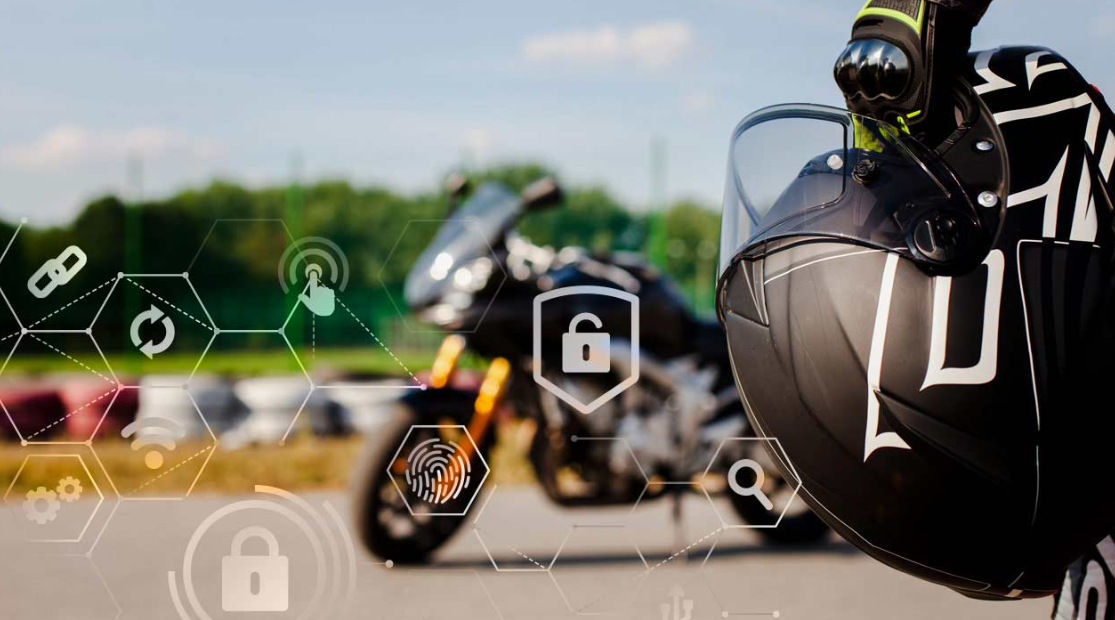
Physical Locks
Visible, robust physical locks are your first line of defense. They deter casual thieves and make your bike a less appealing target compared to the one parked next to it with no visible security. Here’s the arsenal you should consider:

- Disc Locks: These clamp directly onto your brake rotor, preventing the wheel from turning. Look for hardened steel disc locks with alarm options for added deterrence. Bright colors are a bonus for visibility.
- Chain Locks: Heavy-duty chain locks made from hardened steel are excellent for securing your bike to immovable objects like lampposts, railings, or ground anchors. The thicker the chain and the higher the security rating, the better. Always pass the chain through the frame, not just the wheel.
- U-Locks (D-Locks): Similar to chain locks in terms of strength, U-locks are rigid and very effective at preventing wheels from turning or securing the bike to solid objects. Choose a size that fits your bike and locking points.
- Grip Locks: These lock your brake or clutch lever to the handlebar, immobilizing the controls. They are quick to apply and good for short stops in relatively safe areas, but less robust than disc or chain locks for long-term parking.
- Ground Anchors: If you park your bike in a garage or driveway, consider installing a ground anchor. These are permanently fixed to the ground and provide a super-secure point to chain your bike to.
Just don’t forget to take off the lock before you try to roll out!
Locking Tips
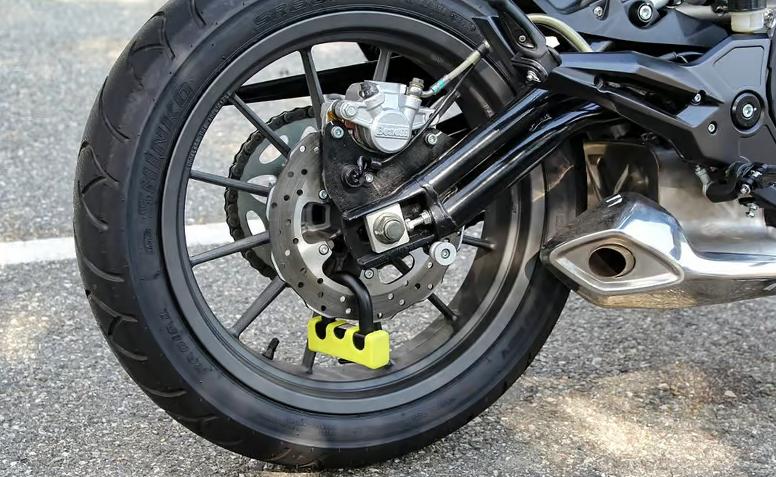
- Use Multiple Locks: Layering security is key. Use a combination of lock types (e.g., disc lock and chain lock) to make theft significantly more difficult and time-consuming. Thieves often look for easy targets and will move on if your bike presents too much of a challenge.
- Lock to Immovable Objects: Whenever possible, secure your bike to something solid that can’t be easily cut or moved.
- Vary Locking Points: Don’t always lock your bike in the same way or to the same spot. Mix it up to prevent thieves from becoming familiar with your security routine.
- Make Locks Visible: Visible locks are a deterrent. Don’t hide them away. Let potential thieves see that your bike is well-protected.
Alarm Systems
Motorcycle alarms are designed to draw attention and scare off thieves. While not foolproof, a loud alarm can be enough to deter opportunistic theft and alert you or others to a potential problem.
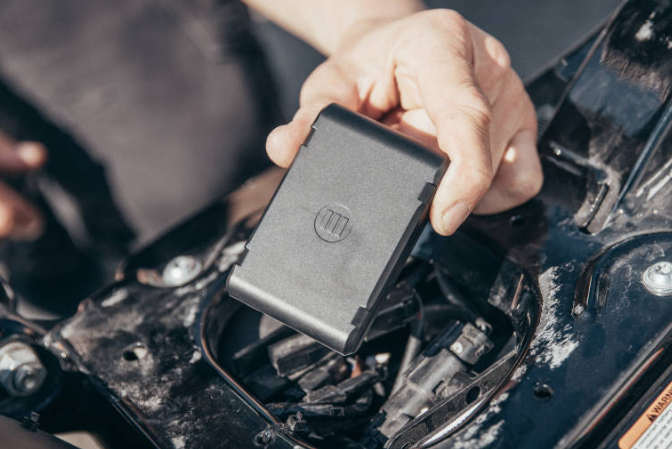
- Types of Motorcycle Alarms:
- Motion Sensor Alarms: These trigger when the bike is moved or disturbed.
- Tilt Sensor Alarms: Detect when the bike is leaned or lifted, common tactics used by thieves to load bikes into vans.
- Combined Sensor Alarms: Many alarms combine multiple sensor types for enhanced protection.
- Alarm Features to Look For:
- Loud Siren: The louder, the better. Aim for at least 120dB.
- Remote Pager/Notification: Some alarms can page you or send notifications to your phone if triggered (in addition to the siren).
- Two-Way Paging: Allows you to remotely arm/disarm the alarm and receive confirmation signals.
- Battery Backup: Ensures the alarm still functions even if the bike’s battery is disconnected.
- Low Power Consumption: Minimize battery drain, especially for bikes that are not ridden daily.
Considerations:
- Installation Complexity: Wired alarms can be more complex to install than battery-powered trackers. Consider professional installation.
- False Alarms: Sensitivity is a trade-off. Too sensitive, and you get constant false alarms. Too insensitive, and it might not trigger when needed. Adjust sensitivity settings carefully.
- Alarm Fatigue: In busy urban environments, people can become desensitized to car and motorcycle alarms. While an alarm is still a deterrent, don’t rely on it as your only security measure.
Smart Parking Habits: Location, Location, Location
Where you park your bike is a critical factor in its security. Think strategically about parking locations:
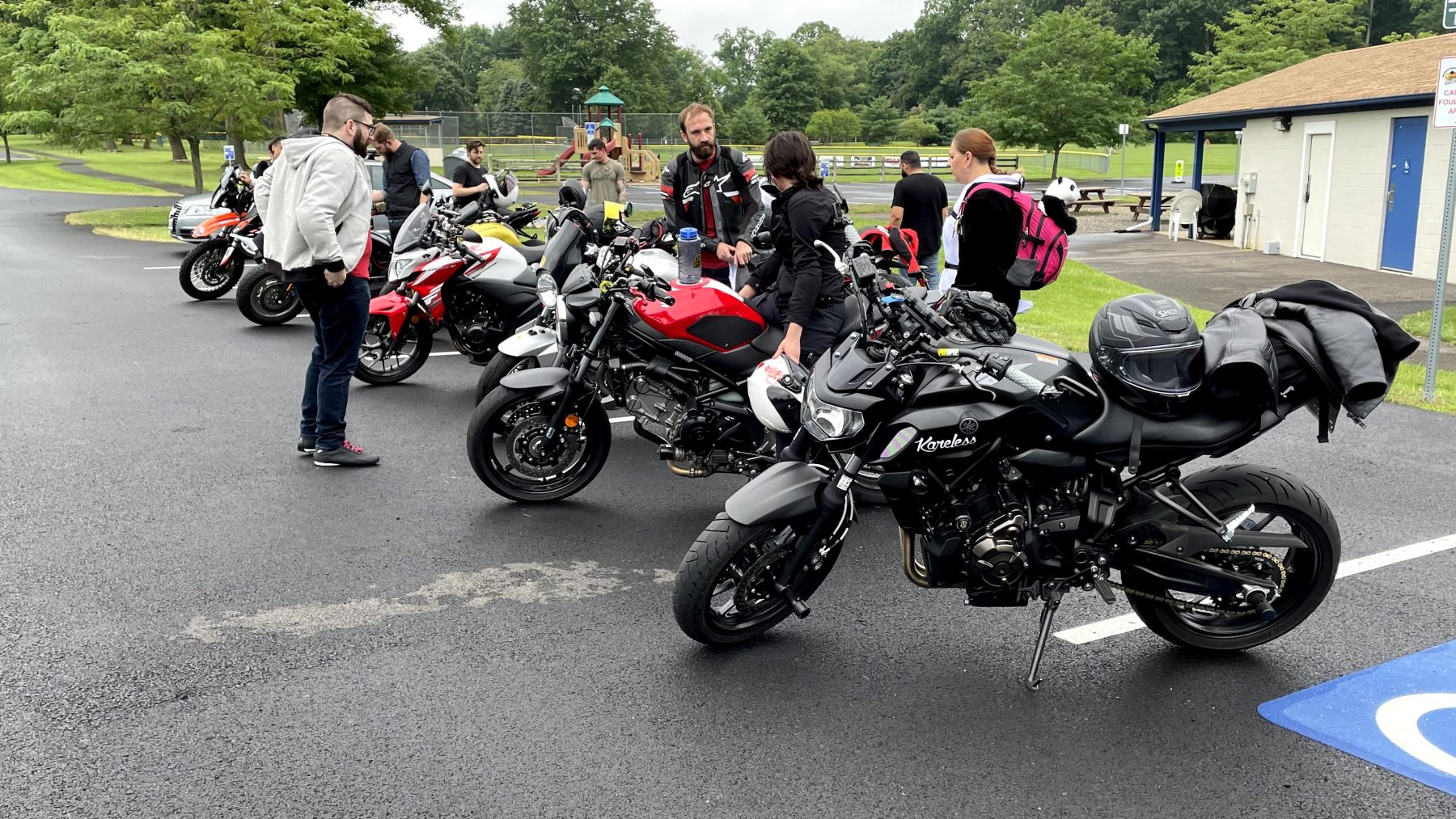
- Garaged Parking: The safest option. If you have a garage, use it! Even better if the garage is alarmed and well-lit.
- Secure Parking Facilities: Look for dedicated motorcycle parking facilities, especially those with security cameras, attendants, or gated access.
- Well-Lit, Public Areas: If street parking is unavoidable, choose well-lit, busy areas with pedestrian traffic. Thieves prefer to work in the shadows.
- Avoid Isolated or Dark Areas: Don’t park in alleys, secluded spots, or poorly lit streets, especially at night.
- Park in View: If possible, park your bike where you can keep an eye on it from inside a building or business.
- Vary Parking Spots: Don’t park in the exact same spot every day. Mix it up to avoid predictable patterns.
Steering Lock & Ignition Immobilizers
Don’t underestimate the simple security features already on your bike:
- Steering Lock: Use it every time you park, even for short stops. It’s a basic but effective deterrent that makes it harder to roll the bike away.
- Factory-Installed Immobilizers: Many modern bikes have built-in electronic immobilizers that prevent the engine from starting without the correct key or transponder. Make sure yours is functioning correctly.
Motorcycle Insurance: The Ultimate Safety Net
Even with the best security measures, theft can still happen. Comprehensive motorcycle insurance is essential to protect you financially in the worst-case scenario.

- Comprehensive Coverage: Ensure your policy includes comprehensive coverage, which protects against theft, vandalism, and other non-collision damages.
- Understand Your Policy: Know your deductible, coverage limits, and the claims process.
- Review Your Policy Regularly: Make sure your coverage is adequate for the current value of your bike and any accessories you’ve added.
- Consider Theft-Specific Add-ons: Some insurers offer add-ons specifically for theft protection, such as guaranteed replacement cost or coverage for security devices.
Remember, no single security measure is foolproof. The most effective approach is to layer multiple security methods. Use physical locks, alarms, smart parking habits, a tracker, and insurance in combination to create a robust security system that significantly reduces your risk of motorcycle theft and gives you the peace of mind to enjoy your ride.
Related
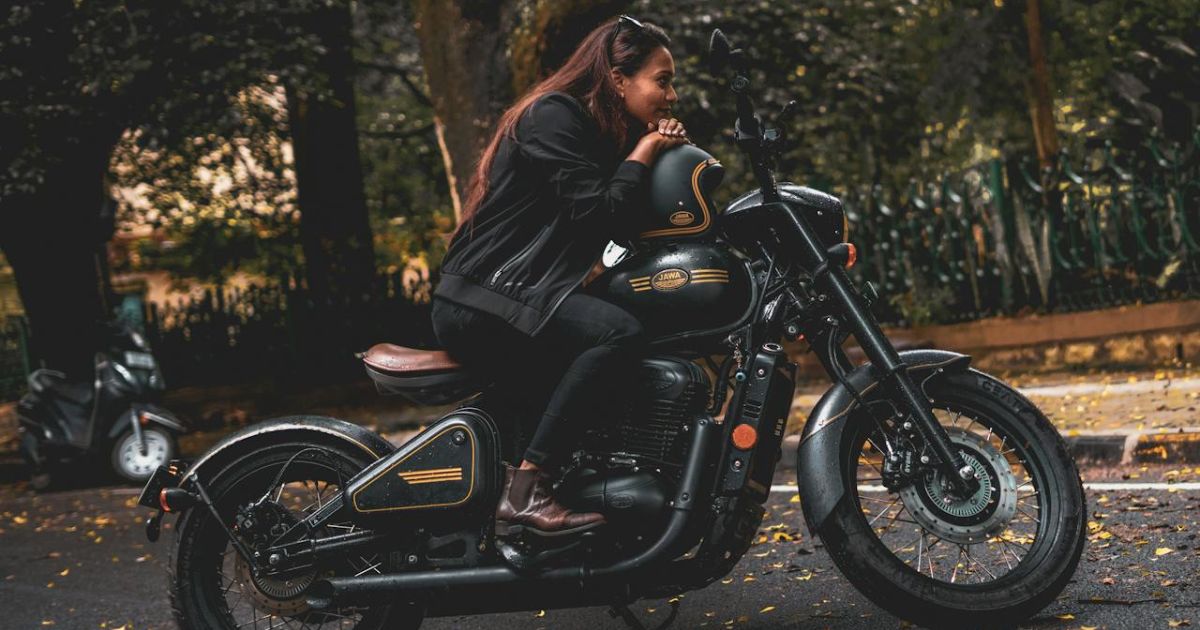
Best Motorcycle Gear for Women: Stylish, Safe & Confident
Discover the best motorcycle gear for women—tested for protection, comfort, and style to keep every rider confident, cool, and safe on the road.



